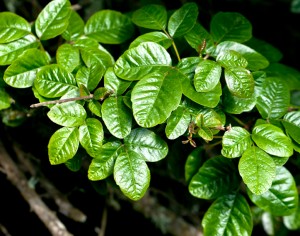
Ways to Identify Poisonous Plants in the Wild
The best way to identify poisonous plants is to become familiar with pictures of varieties growing in your area (like poison ivy, poison oak, poison sumac, poison hemlock, stinging nettle, etc.) This is because poisonous plants come in so many forms that any individual rule of thumb won’t be sufficient. For instance, poison ivy grows on vines, poison oak and poison sumac grow in shrub form, and poison hemlock looks like giant parsley!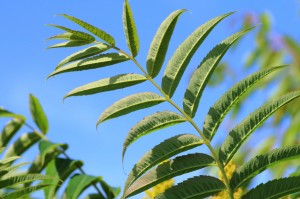
poison sumac leaf
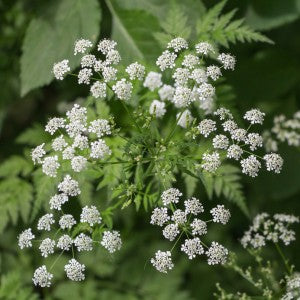
poison hemlock
The traditional rule “leaves in three, let it be!” only applies to poison ivy and poison oak; poison sumac has clusters of 7-13 leaves. To complicate matters, there a lot of other plants that also have leaves grouped into three, e.g., box elder saplings, making it harder to distinguish specific plants. According to the University of Maryland Medical center, Stinging Nettle leaves are heart shaped, finely toothed, and tapered at the ends. Stinging nettle plants are very hairy—the entire plant is covered with hairs on the underside of the leaves and stems. Although you can eat Stinging Nettle, it’s advised to collect them with gloves because if you touch any of the hairs, a stinging chemical is released.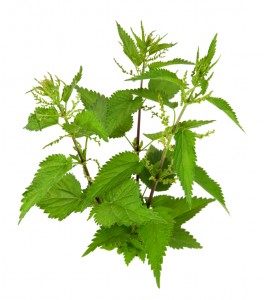
Stinging Nettle
Stinging Nettle is also known for its brightly colored, yellow or pink flowers, which the poison ivy, oak, and sumac are not. Although, check out this lovely picture of poison ivy flowers. Who Knew?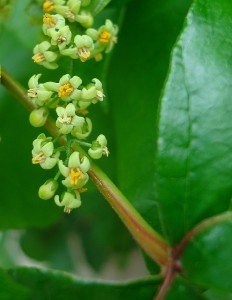
Two pieces of good news brighten the situation:
1. Knowing a few additional tips can help you identify at least some of the most common poisonous plants—poison ivy and poison oak—which are prevalent in most areas of the country. Three-in-one isn’t fun. The rule “leaves in three, let it be!” really means this: no leaf on a poison ivy or poison oak plant is an individual. Every leaf has three leaflets, which grows off a common stem, which grows off a branch. So if you see three leaves at the end of a branch, continue inspecting the branch toward the body of the plant. Is every single leaf actually three leaflets (each with their own short stems), growing off a main leaf stem, growing off a branch? Then yes! It’s poisonous! If no, it’s not poison ivy or poison oak, thank goodness.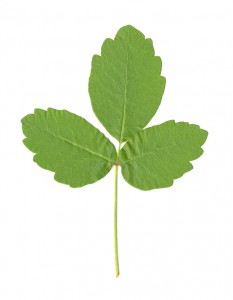
poison oak leaf
Alternate isn’t great. (Okay, it’s an awkward phrase, but it’s true.) Poison ivy and poison oak have features that alternate. The leaf stems alternate on the branch—they are never directly opposite each other. The veins on the leaflets (each poison ivy and poison oak leaf is made up of three leaflets; this is what is meant by “leaves in three, let it be!”) alternate and are never directly opposite each other. Any flowers growing on the plants alternate on the flower branches; they are never directly opposite each other. Handy, right?
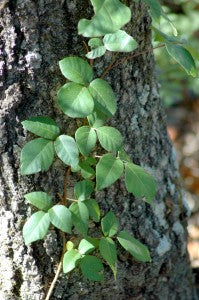
Poisonous Plants in Your Yard
It’s important to note that some common decorative plants can be toxic to the touch. While they’re unlikely to kill you unless you ingest them—DON’T INGEST THEM!—it might be best to steer clear of them entirely. Two are particularly common, beautiful, and irritating. Oleander 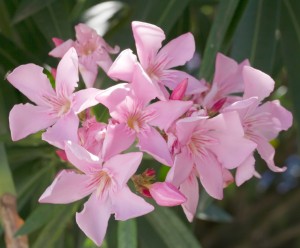
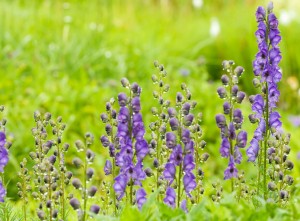
So I Touched a Poisonous Plant . . .
If, after exposure to vegetation, you feel tingling, see a rash, or otherwise experience some kind of physical reaction, your best responses are these:- Try to determine what plant might have caused a physical reaction; follow any plant-specific care directions you may find in the above plant guides or in other resources, such as A Comprehensive Guide to Wilderness and Travel Medicine Book.
- If you don’t have a guide or specific directions for treatment, rinse the location with water and disinfectant, being careful not to transfer the irritant to another part of your body or to your clothing (if that’s possible). Have a kit on hand like the Professional Outdoor Skin Protection Kit with Soft Case to help you rinse and soothe the affected area.
- If your response persists despite treatment, affects your breathing or heart rate, or causes more than just a mild reaction on your skin, call your healthcare provider or poison control.

5 comments
tom ohba
This is very good article and I don’t know how many poisonous plant in western Canada?
I do not going to wildness too often but may good idea to know.
Thank you
David Henard
When washing your hands, use cold water. Cold water will close your pores while hot water will open them. In a pinch cutting firewood, I came into contact with poison oak and washed my hands off with 2-cycle gas. it worked. Also, if you know what jewel weed is, its sap will also work.
Dan Davies
Another, mostly unheard of remedy for poison ivy, is to use your own urine to wash the rash, and let it dry. That should cure you of ever being affected by poison ivy again.
A co-worker informed me of the cure in the year 1984, and despite being in, and around poison ivy since, it has never affected me.
Kathy EM
Old time prevention – fels naptha soap. If you’ve been exposed to poison oak, you want to get the oils off your skin and clothes as soon as possible. Wash with fels naptha soap, including your clothes.
You can also get exposed via your pet – if they run through poison oak and pick up the oils on their coat, bathe them immediately to keep them from spreading the oils on you and in your home.
tamara thompson
This was very helpful, thank you